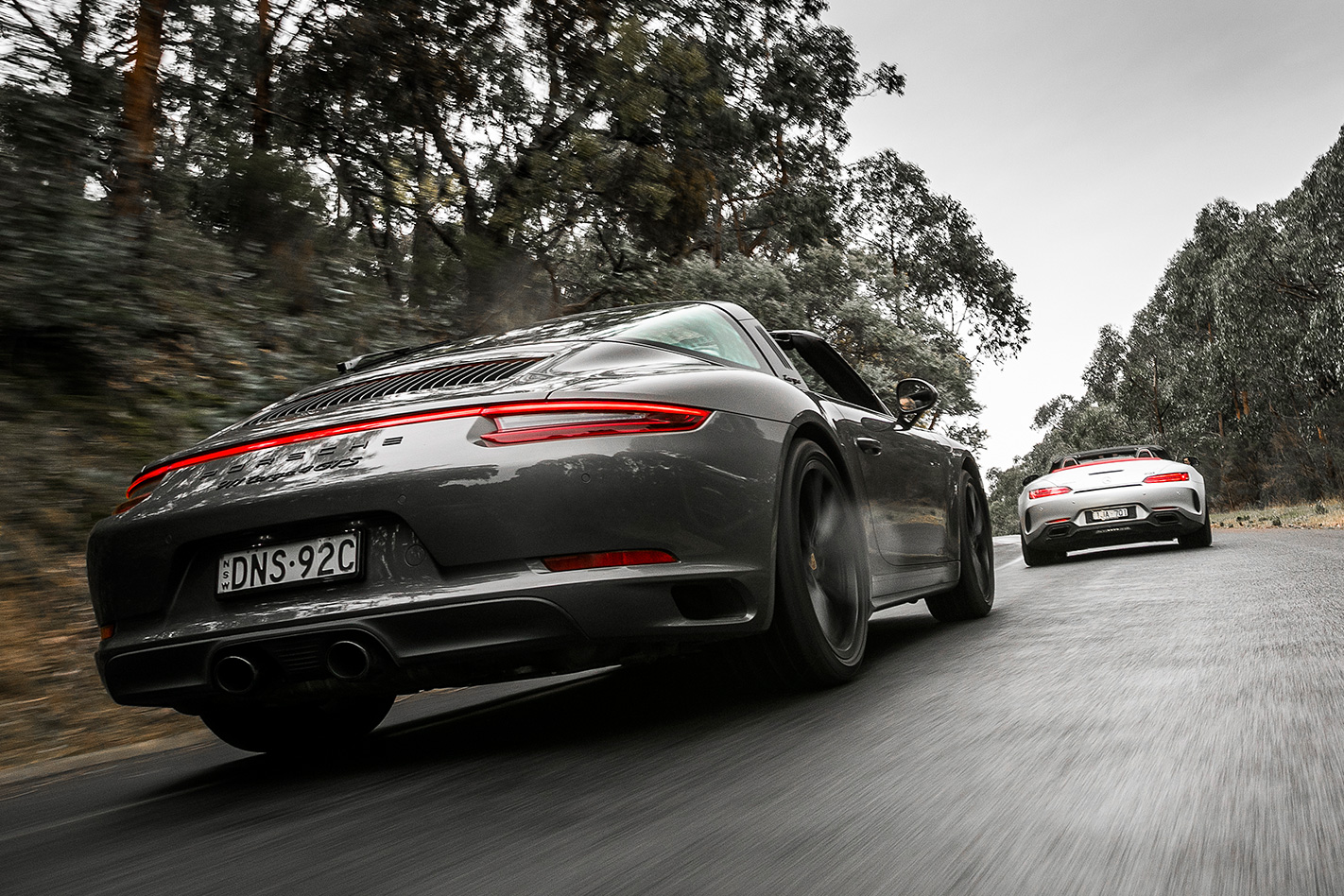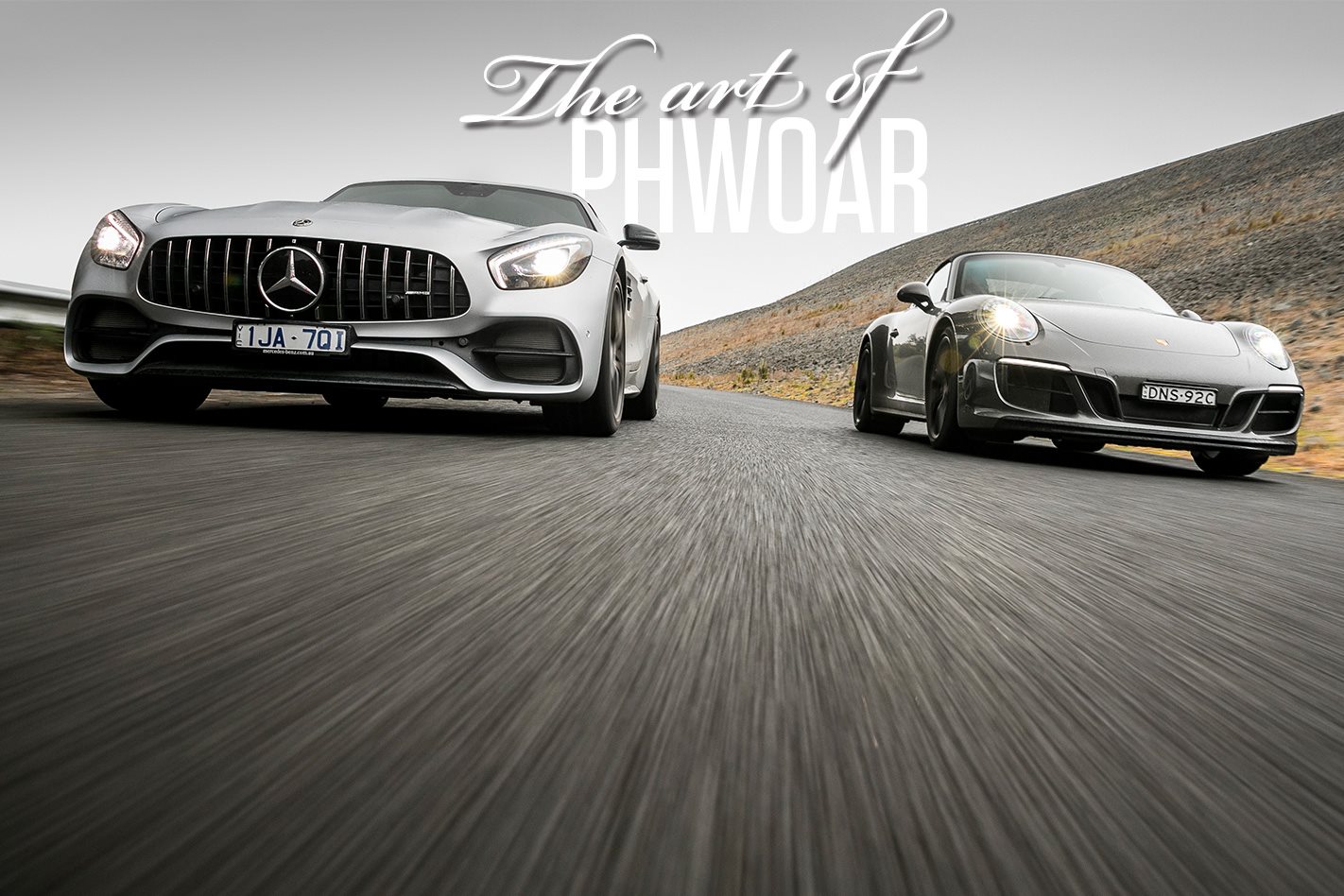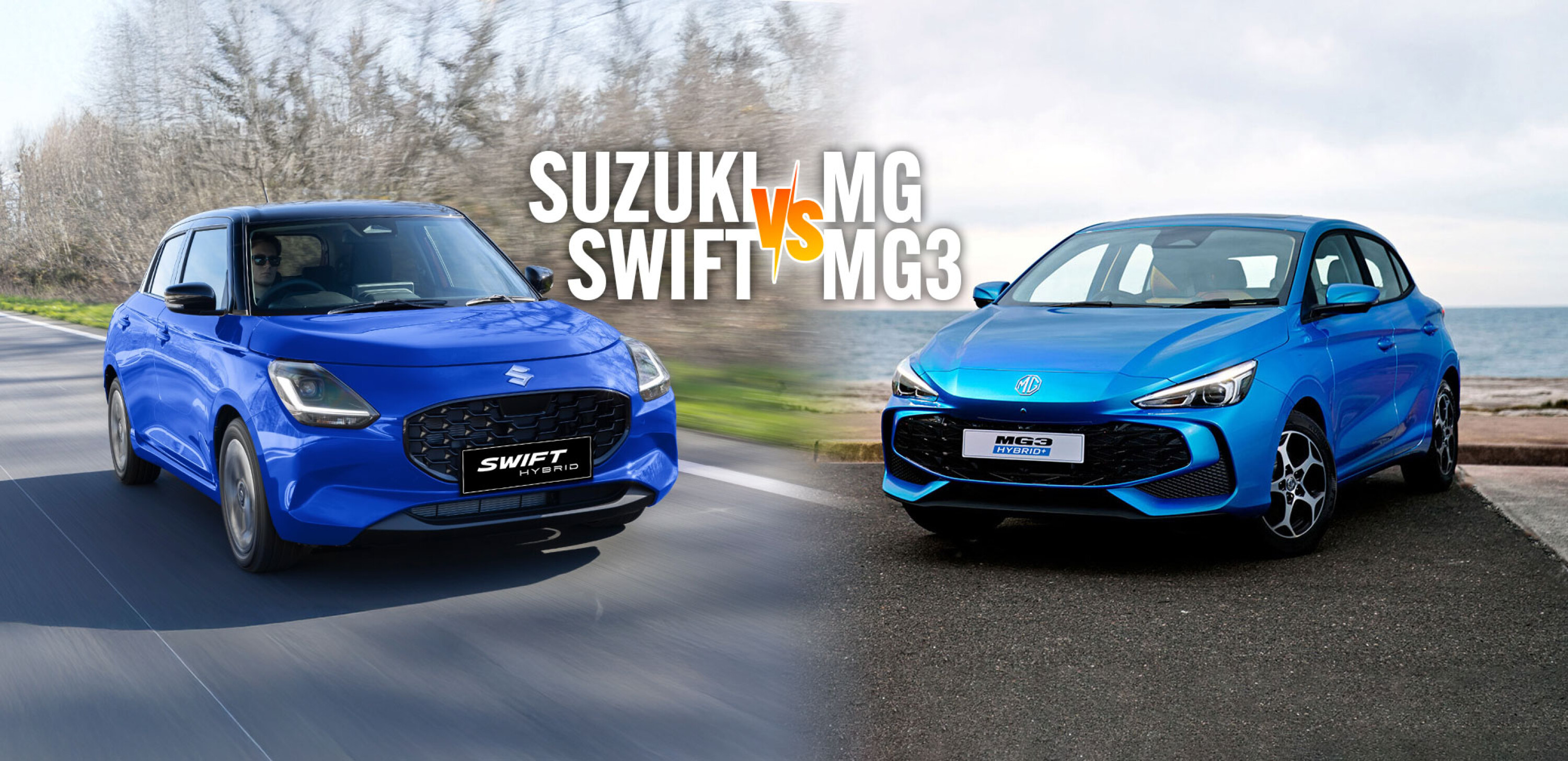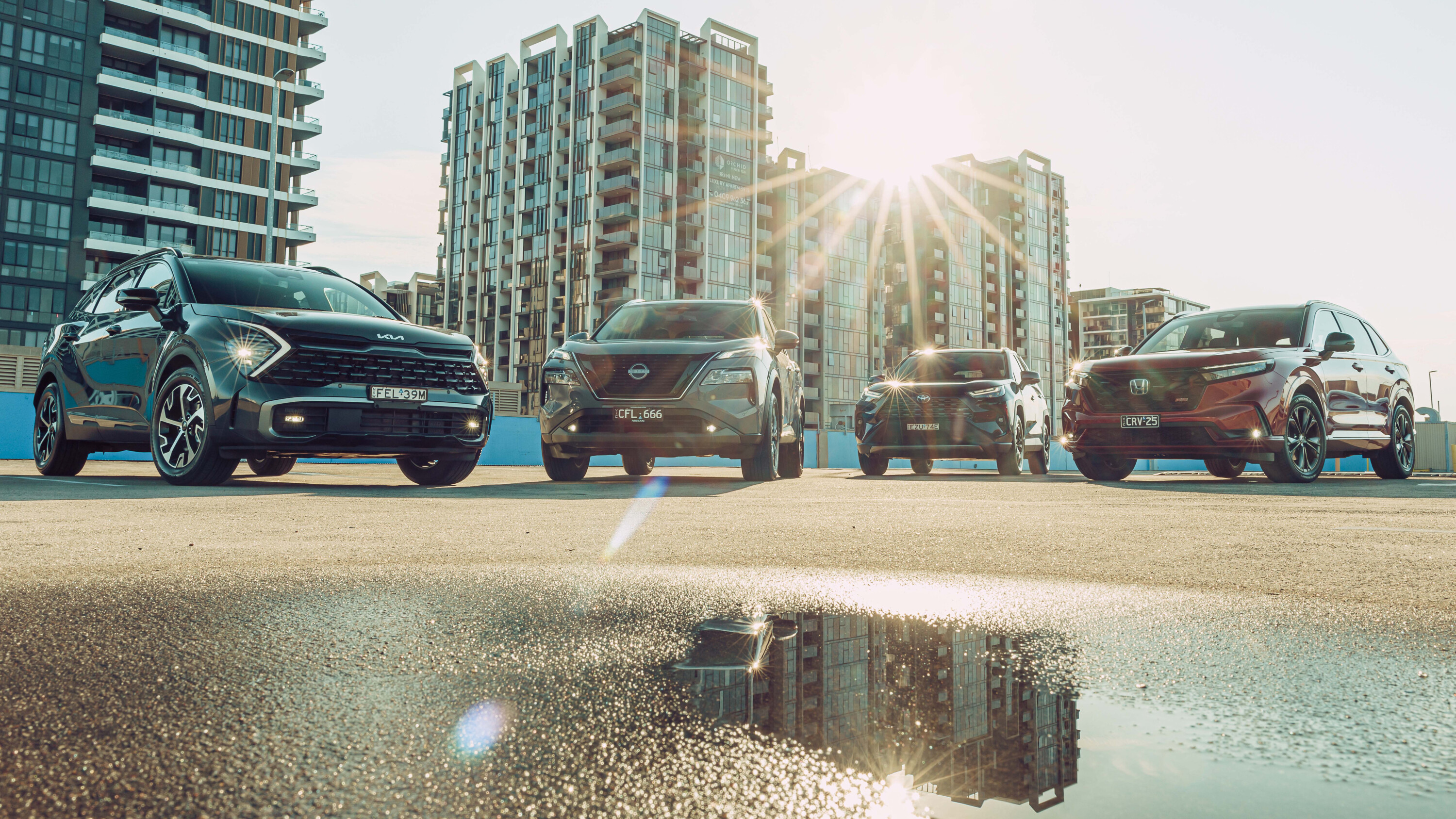IT’S probably not an adage, but maybe it should be: unless you’re Jason Bourne, don’t bring your fists to a knife fight.
And similarly, if you’re Mercedes-AMG, don’t send just ‘any’ AMG GT to a showdown with a Porsche 911.
Porsche’s rear-engined icon may be in the twilight phase of its 991 model cycle, with an all-new car due in less than two years, yet fact is it’s never been more primed for war than in this 991.2 guise and specced to ultra-desirable GTS level.
But before we delve into a full rundown of our combatants, a quick disclaimer: This two-car battle began as a stoush between a couple of Stuttgart-born stormers, but evolved into more of a tag-team tussle when our first Porsche – a PDK-equipped GTS coupe which starts life at $286,390, but was specced up to $339,230 – developed a rare electrical issue. In its place came a Targa 4 GTS, bringing all-wheel drive, an electrically folding roof panel, and a base price of $316,000. Our example was comparatively tamely specced to $342,830.
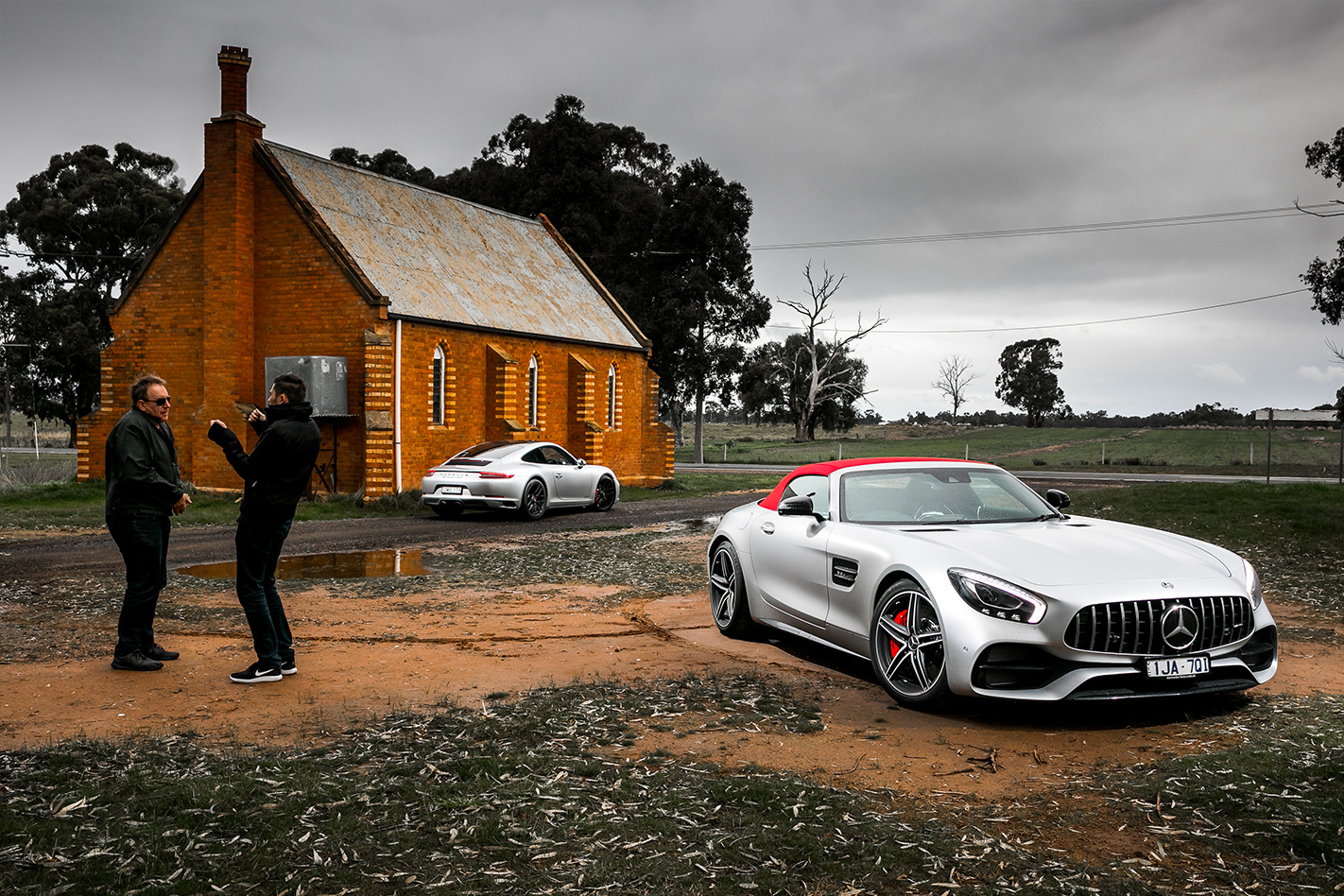
It’s worth a quick recap to understand the GT C’s positioning here, as the uninitiated may confuse the ‘C’ bit as indicating cabrio or convertible, but this isn’t the case. The ‘C’ denotes the spec level sitting a rung above GT S (so two grades above the base GT), but below the ultra-focused AMG GT R. The C (which will also arrive in coupe form next year) gets the wider rear track of the GT R, along with 57mm wider guards to house it, as well as the flagship’s rear-wheel steering and electronically controlled limited-slip differential. The GT C’s 4.0-litre twin-turbo V8, too, is ramped up to 410kW/680Nm, so not far short of the 430/700Nm of the full-house GT R.
Being funnelled purely through the rear treads – admittedly vast 305/30R20 Continentals – may have even hardened power junkies deeming 410kW/680Nm as ‘adequate’; factor in streaming wet Victorian roads for our two test days and we may revise that to ‘adequate plus a bit’.
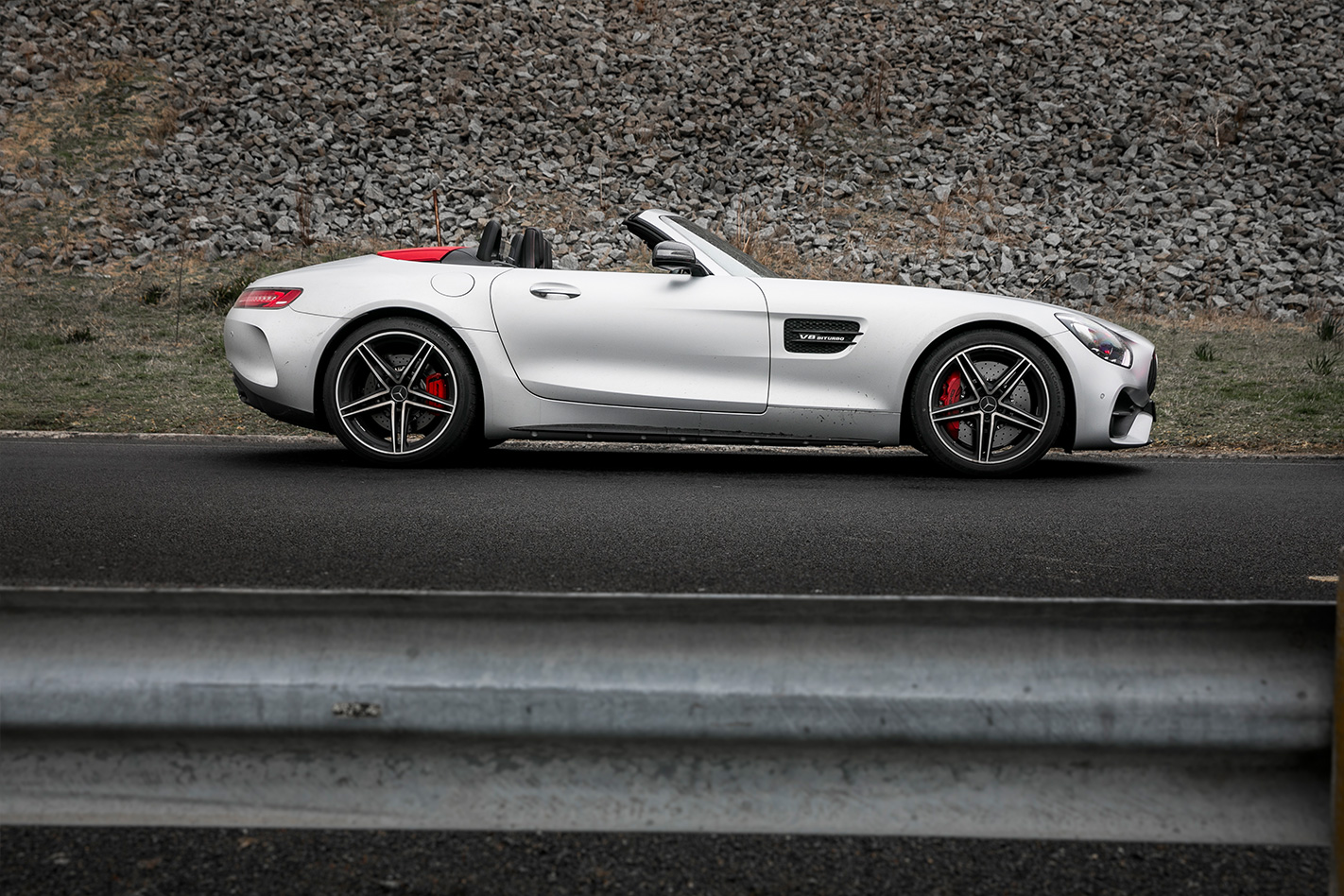
When the road opens and your restraint evaporates, though, the GT C is capable of acceleration that is vicious, loud, and seemingly unending until you’re into heavy triple digits. There’s something vaguely reminiscent of an offshore powerboat in the way the vast prow of a bonnet that stretches out ahead of you rises slightly when right foot meets firewall, the rear end scrabbles for traction, and the switchable exhaust allows full thunder from the oversized oval pipes.
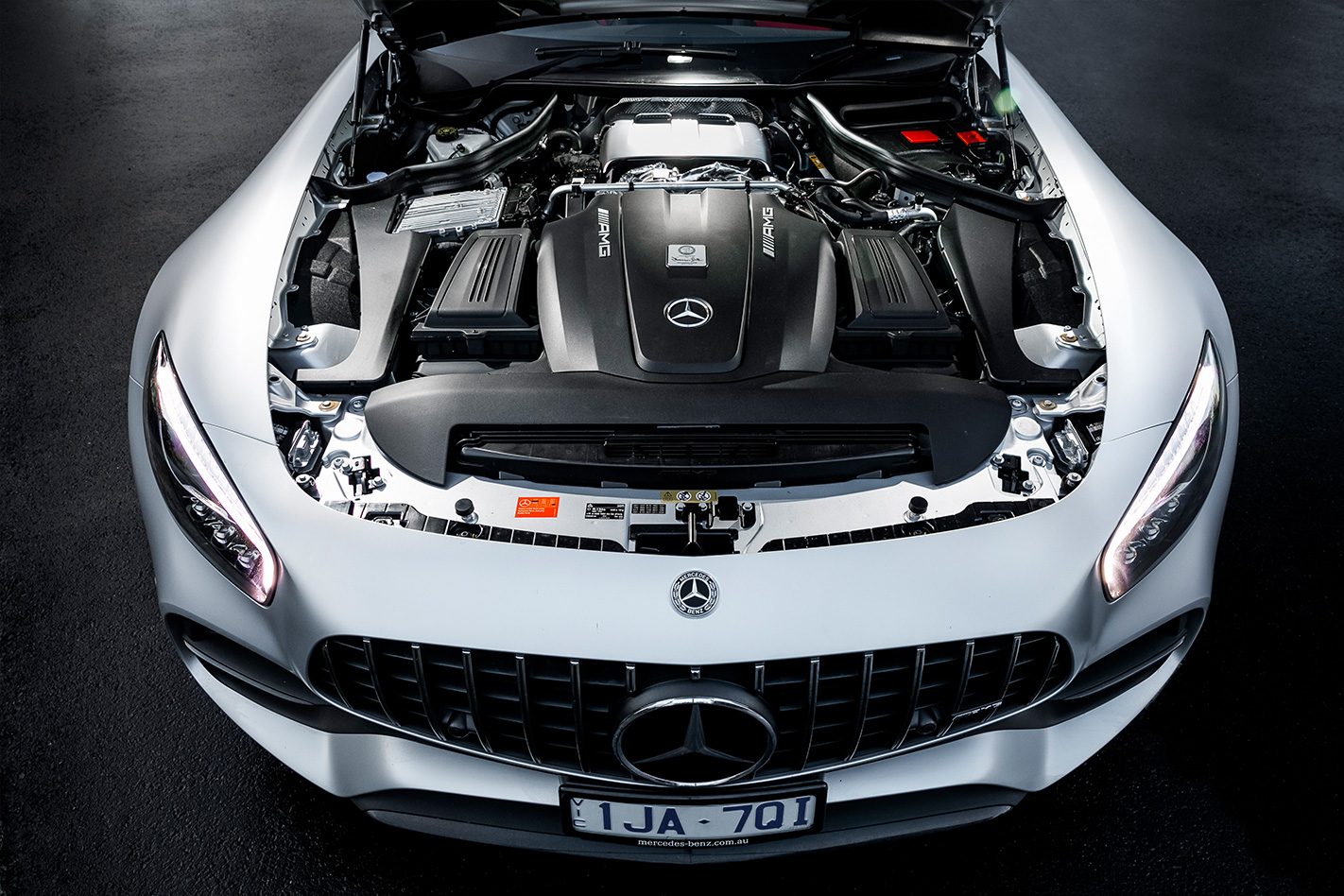
All of which lulls you into thinking that the Porsche’s downsized flat-six, giving away two pots and around a litre of capacity, is going to struggle to compete with such overt V8 fire and fury.
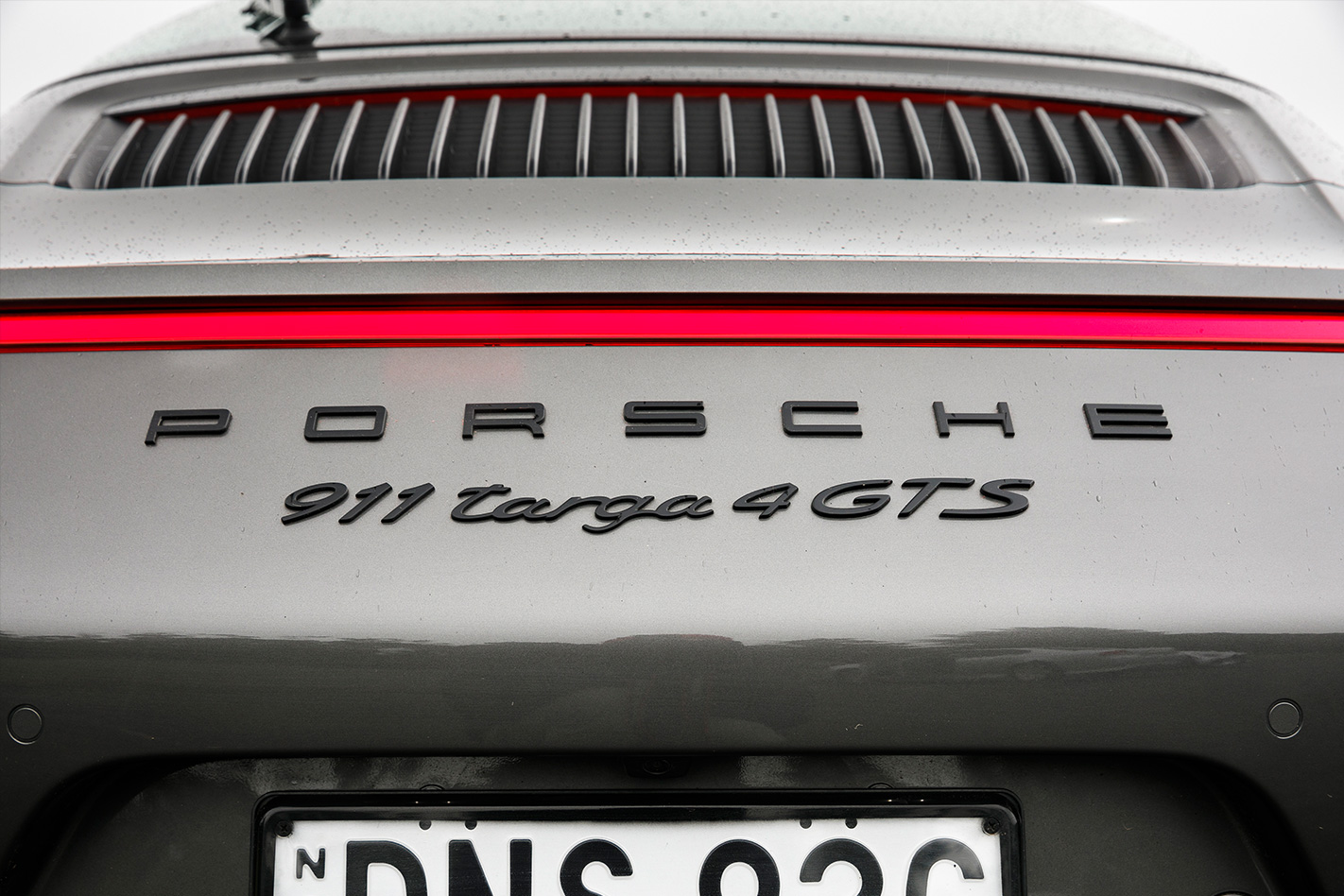
Okay, an ardent lover of the old 3.8-litre atmo six (err, that would be me) might mention that the really tingly yowl of that engine has been neutered slightly, and the necessity to wring it to redline has been eroded just a little. But the now-bulging mid-range translates to serious real-world punch, firing the car out of tighter corners with the sort of sting that would have had you in a holding pattern for a few moments while the old engine climbed into its boogie pants.
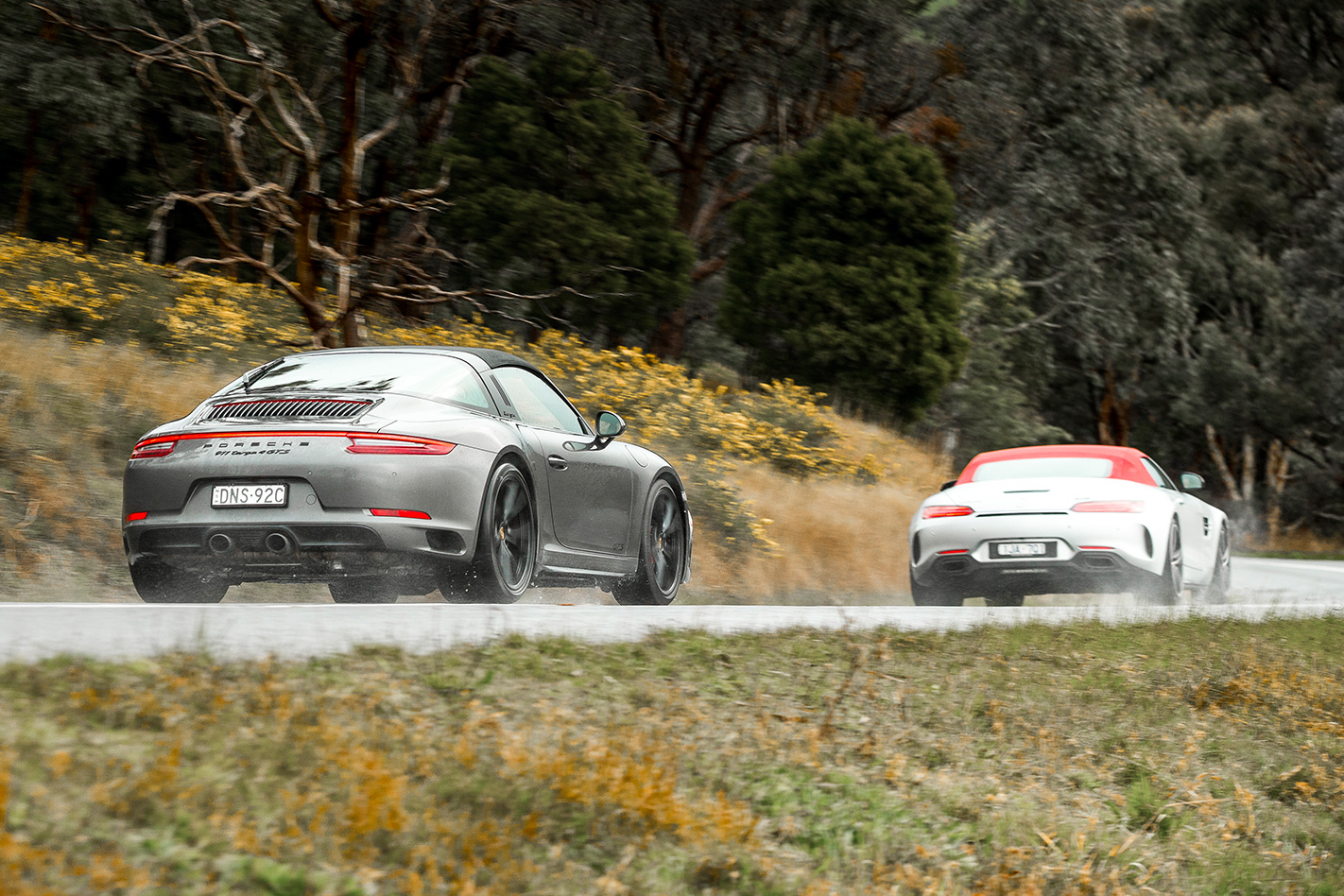
On a wet strip, the big AMG couldn’t match that, delivering a less-than-awesome 4.0sec. In the dry, though, and aided by its launch-control function, which allows you to adjust the pre-set engine revs up or down via the shift paddles, we have no doubt it would deliver on its 3.7sec claim.
So, despite differing approaches, both achieve similarly scalding performance. More significant are the differences in the way each car interacts with its driver, and method in which each goes about doing a demolition job on a quiet back road. The Porsche instantly feels much more compact and intimate; it seems a little ironic that when the 991 generation first launched back in 2011, there were moans that Porsche had taken the 997 design and stuck it on a photocopier and hit the ‘120 percent enlarge’ button.
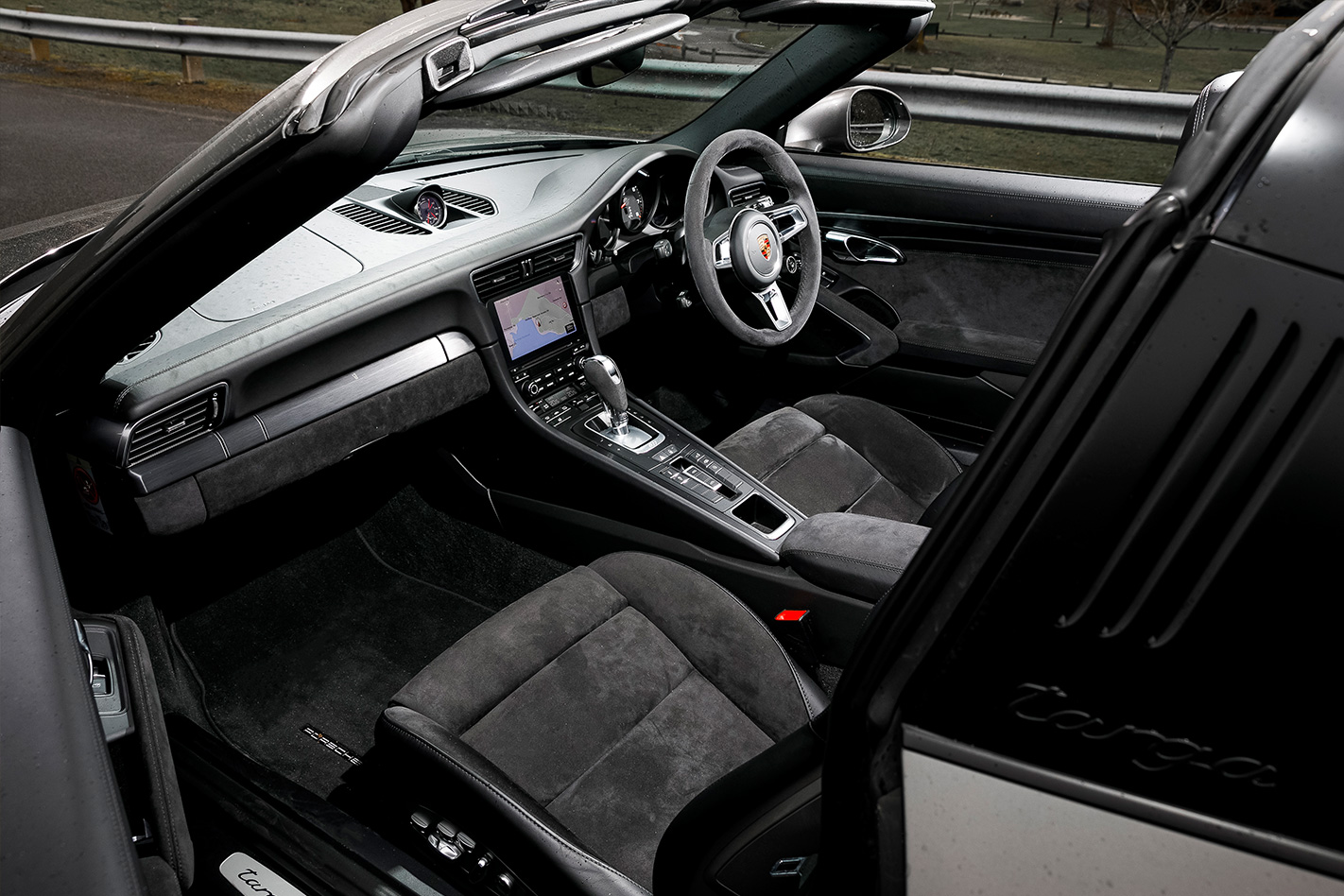
Steering, too, shows some radically different thinking at work. The 911’s system has been further improved with this 991.2 update, and to find an electrically assisted system as feelsome, natural, ideally weighted, and giving you such confidence in the front end, well, you’d open the Porsche catalogue in the Boxster/Cayman section. Again, Porsche enthusiasts went all emoji-sad-face when the axe fell on the 997’s hydraulically assisted rack, and lamented that the writhing, analogue feel had gone for good. The current car may have a facsimile of that set-up, but it’s a bloody accurate one, and hard to argue if it’s notably inferior.
It’s a tactile connection the GT C has no answer to, at least not in moderate driving on sweeping roads that require only small inputs. Here the AMG’s wheel feels a little aloof, not really interested in engaging your sense of touch; more intent on filtering out the feedback of surface irregularities that the Porsche is happy to pass on. Only when the corners start to tighten and the demands for more lock are made does the AMG’s steering start to reveal itself, and the speed of the rack, the consistent weighting and the instant, incisive response from the front axle can be appreciated.
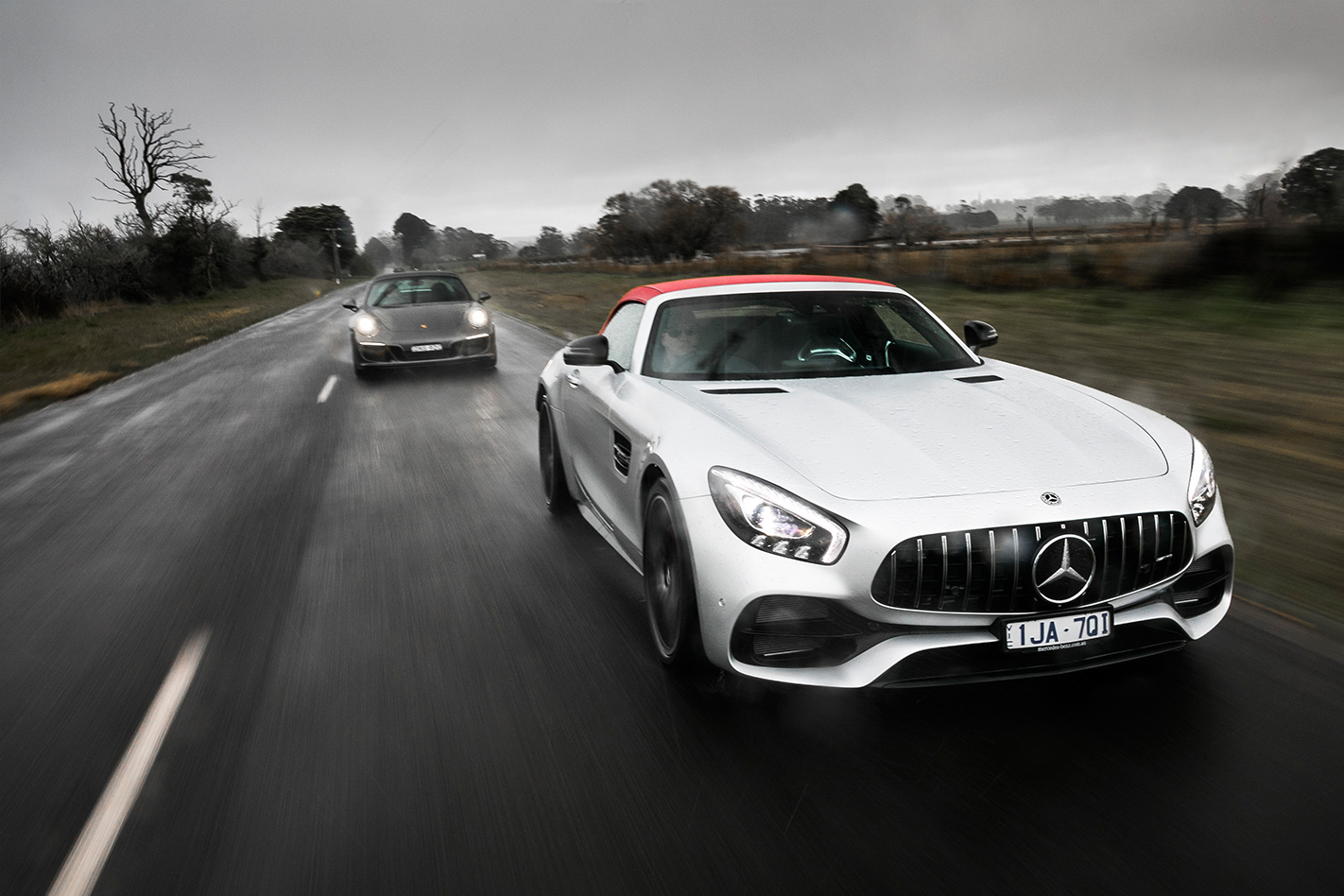
The Comfort setting continues the AMG in-joke of being code for ‘ultra-firm’, while Sport only works on uncommonly smooth roads, leaving Sport Plus effectively limited to a track. This iron-fisted approach to spring and damper tuning makes sense when you hammer the car through fast undulations, where the hand-of-God body control can be appreciated; it’s less welcome in terms of the toll it takes on comfort and the car’s broader GT abilities.
The comfort issue isn’t helped by seats with super-firm, thinly padded bases, and insistent road roar on coarse-chip coming from the huge rear tyres. It’s a shame because the cabin’s roof-up insulation is exceptional, with wind noise and ambient racket beautifully zipped out.
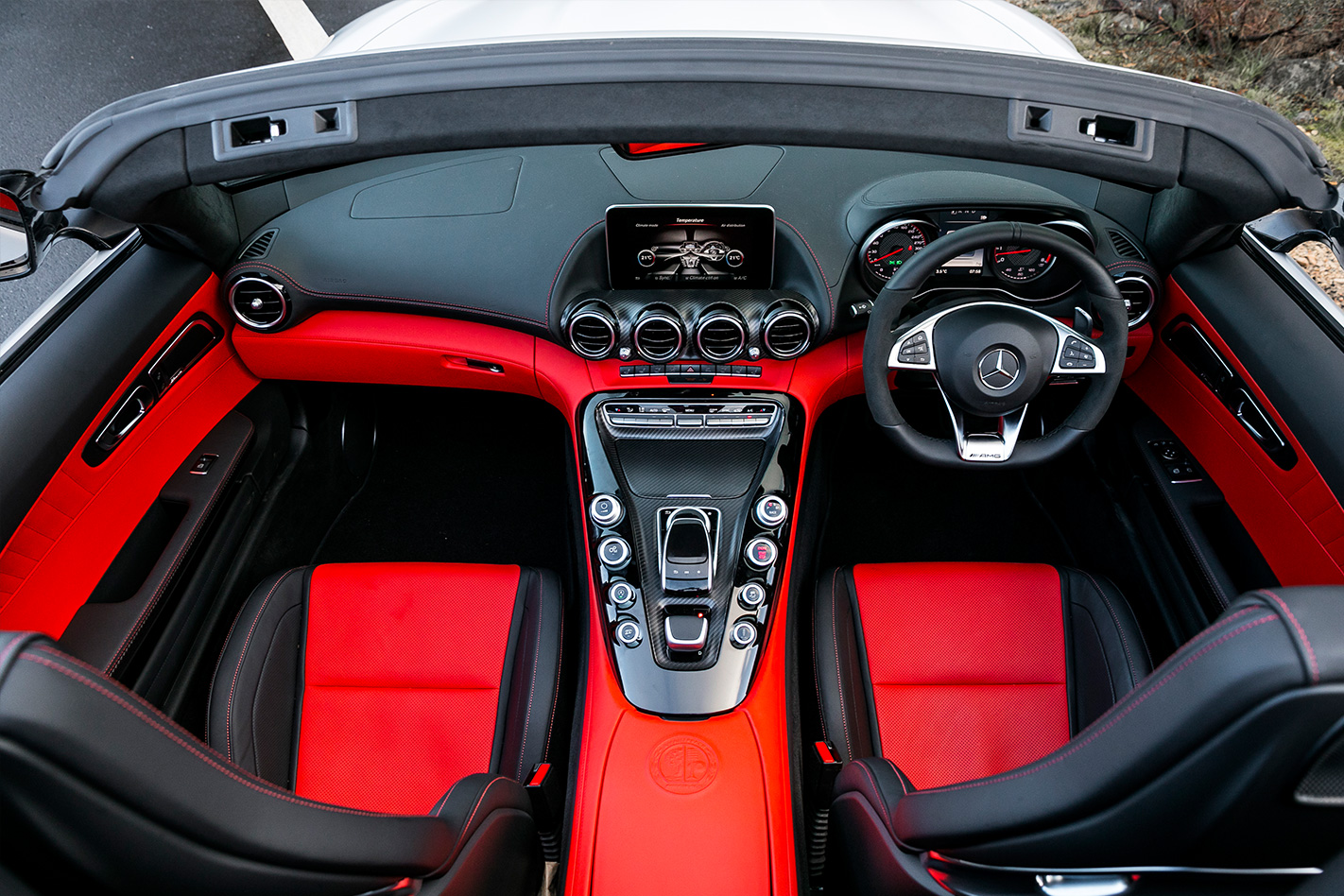
The Targa 4 GTS, running the standard suspension tune (which is still 10mm lower than a regular Targa 4S) is appreciably more compliant. Message, people: unless you’re in the adult entertainment industry, lower plus stiffer does not always mean extra enjoyment. Besides, all GTS models are fitted with two-stage adaptive dampers if roads and driving conditions encourage a firmer suspension setting.
In the wash-up – literally, in terms of our driving conditions – we need to cut the Merc a break, because we know the constantly wet roads during our test didn’t play to its strengths, and we know what the Roadster is capable of on smooth, dry tarmac from our time on American roads at the car’s launch. Its grip levels are neck endangering, the rear steering gives it an agility and pointiness that elevates it to a level above the GT and GT S, and that engine just keeps on making you shake your head and mumble expletives.
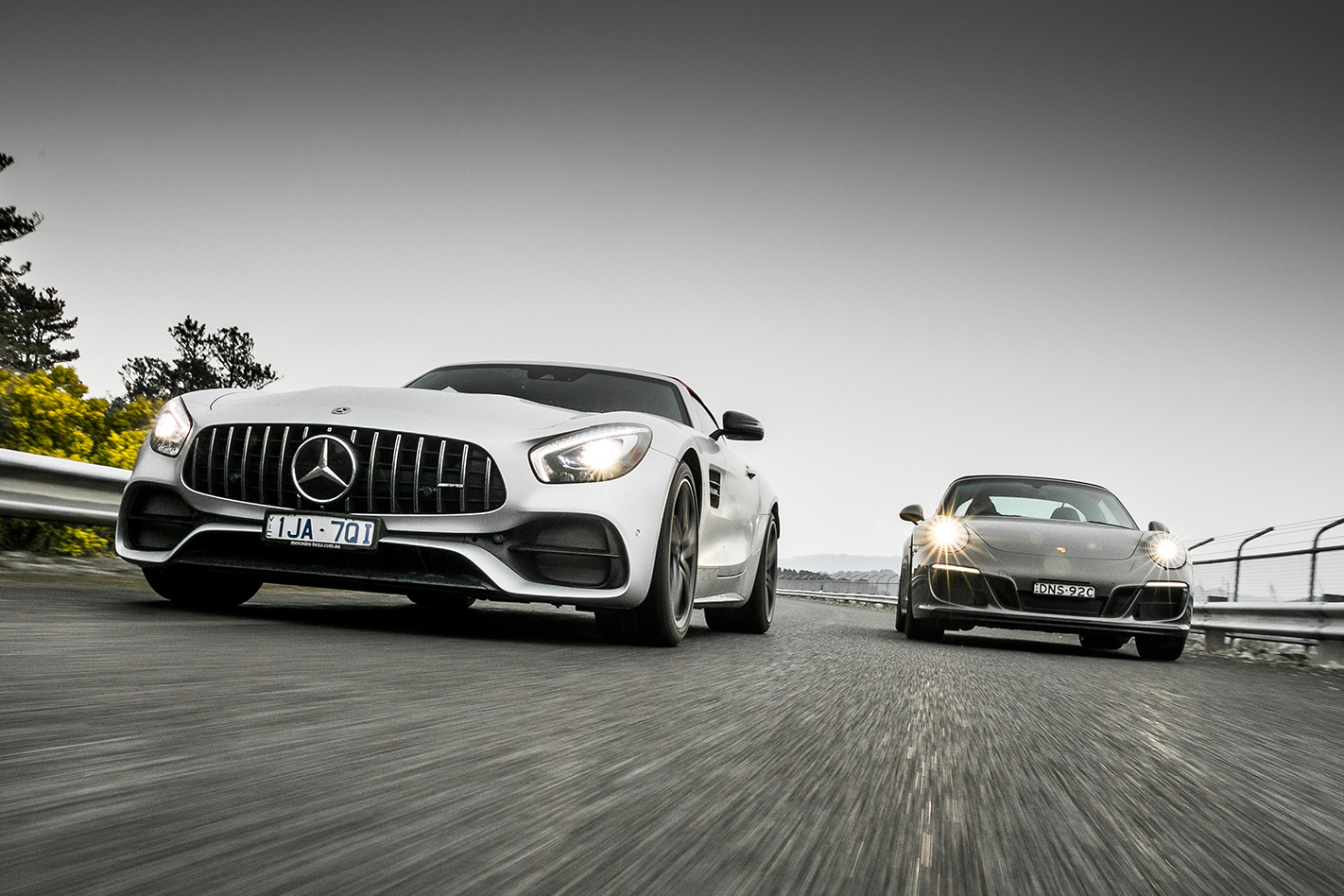
It also works brilliantly with the roof down; praise that can’t be shared with the 911 Targa. Where the AMG minimises cabin turbulence and manages occupant comfort with a gilt edge, Porsche’s Targa drops the ball. Its airflow ‘management’ amounts to turning the rear of the cabin into a windsock, and the buffeting around your ears at highway speeds will have you quickly grabbing for the button to put the roof back where it belongs.
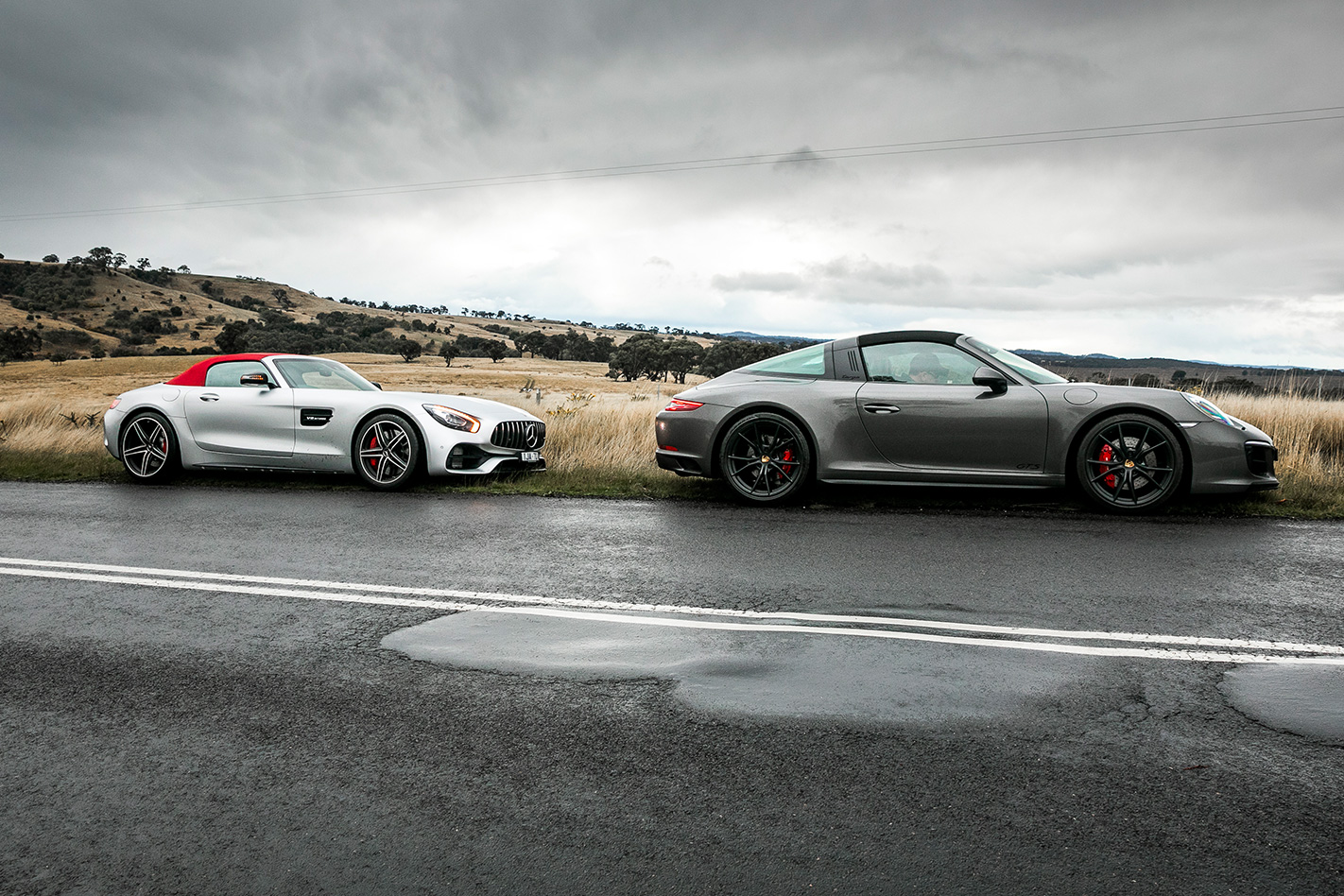
Which will probably be as relevant to 911 GTS owners as George Clooney’s star sign. They know they’ve bought the world’s greatest all-round sports car; a machine honed to near-perfection, with an unbeatable depth of engineering integrity and real-world useability. The sun may be setting on the 991-generation 911, but light still glints off the GTS’s blade.
